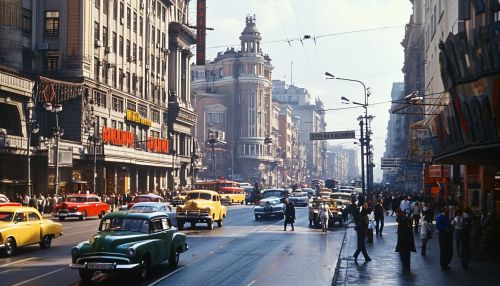Khrushchev Thaw
Introduction
The Khrushchev Thaw refers to the period from the mid-1950s to the early 1960s when repression and censorship in the Soviet Union were significantly eased under the leadership of Nikita Khrushchev. This period was characterized by a series of liberal reforms in areas such as foreign policy, cultural and intellectual life, and human rights.


Background
The Khrushchev Thaw came after the death of Joseph Stalin in 1953, a time when the Soviet Union was known for its severe political repression. Stalin’s death left a power vacuum in the Soviet Union, and after a brief power struggle, Khrushchev emerged as the leader.
Domestic Policies
During the Khrushchev Thaw, there were significant changes in domestic policies. Khrushchev initiated a process of "de-Stalinization", which involved the dismantling of the cult of personality around Stalin and the purging of his influence from Soviet society. This process also involved the release of many political prisoners and the easing of censorship, leading to a blossoming of literature and the arts.
Foreign Policies
In terms of foreign policy, Khrushchev pursued a policy of "peaceful coexistence" with the West, a significant departure from the confrontational policies of his predecessors. This policy led to a reduction in tensions between the Soviet Union and the West, and allowed for increased cultural exchange and trade.
Impact on Society
The Khrushchev Thaw had a profound impact on Soviet society. The easing of censorship led to a flowering of literature and the arts, and the release of political prisoners led to a greater sense of freedom among the populace. However, the Thaw also led to increased tensions within the Soviet Union, as many people began to question the legitimacy of the Soviet system.
Conclusion
The Khrushchev Thaw was a significant period in Soviet history, representing a brief respite from the severe repression of the Stalin era. However, the Thaw was short-lived, and by the mid-1960s, the Soviet Union had returned to a more repressive regime.
